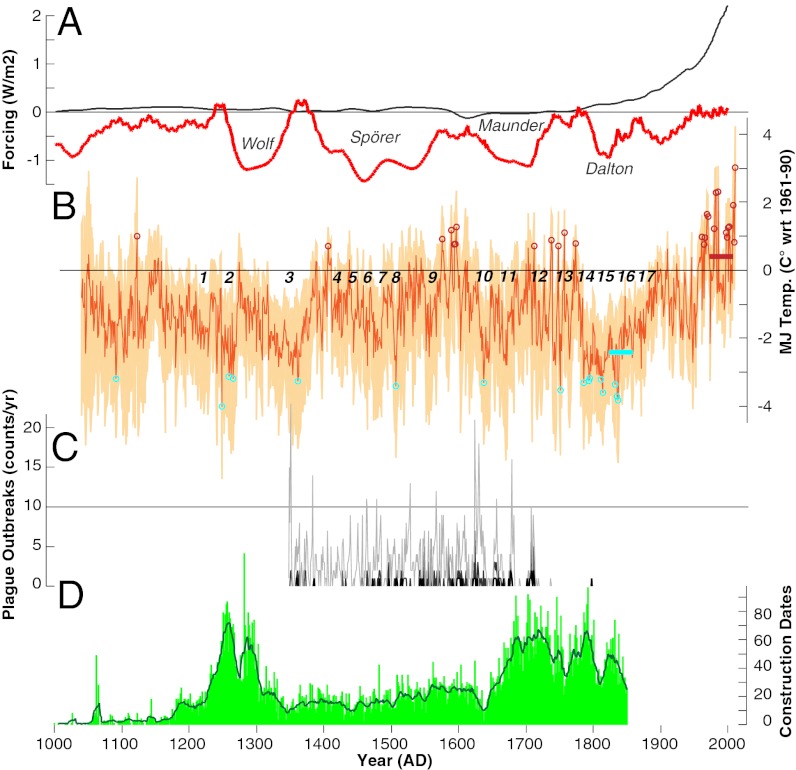Fig. 3.
Temperature reconstruction. (A) Estimates of radiative solar and greenhouse gas (red and brown) forcing (51) compared with (B) reconstructed MJ temperatures (dark orange) and its uncertainty range (orange shading). The red and blue circles refer to the 33 warmest and 16 coldest years (>2 SD), whereas the horizontal pink and blue bars refer to the warmest (0.3 °C) and coldest (−2.45 °C) 30-y intervals. Important historical events of Eastern Europe with special emphasis on the Baltic region: 1, Conquest of Prussia by Teutonic Order; 2, Mongolian Invasion; 3, Black Death; 4, Battle of Grunwald; 5, Lithuanian Crusade and Polish-Lithuanian Union; 6, Thirteen Years' War; 7, Fall of the Golden Horde; 8, Rise of the Hanseatic League; 9, Livonian War; 10, Polish-Muscovite War; 11, Second Northern War; 12, Great Northern War; 13, Seven Years’ War; 14, Partitions of Poland; 15, French Invasion of Russia; 16, Polish-Russian War; 17, January Uprising. (C) A total 514 annual-resolved and precisely located plague outbreaks that occurred in the region between 1350 and 1798. (D) A total of 20,737 regional construction dates between 1000 and 1850.

